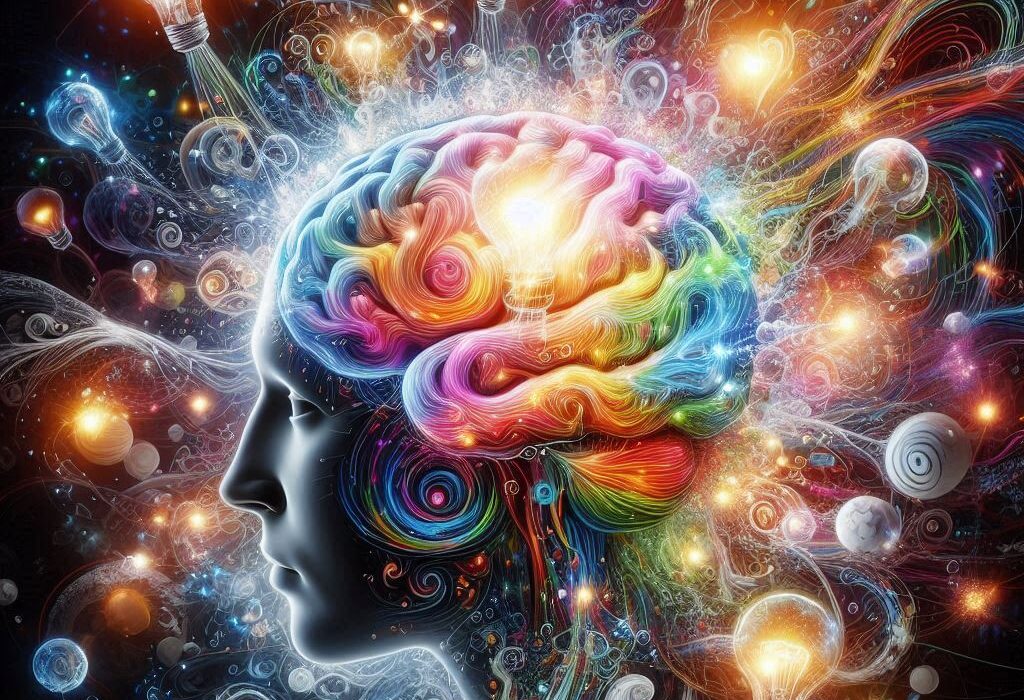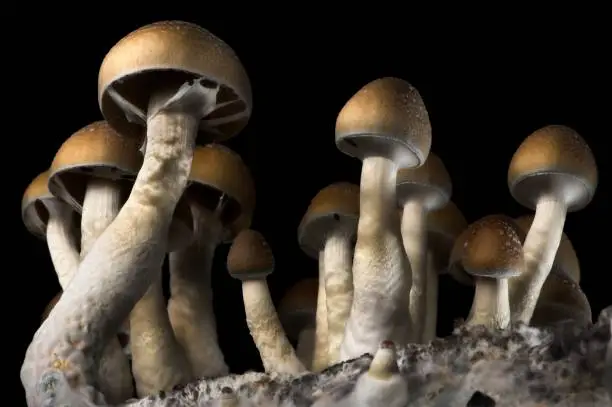Every morning, millions of people around the world wake up, reach for their phones, brush their teeth, drink coffee, and begin routines so automatic that they hardly require thought. These patterns, repeated day after day, shape our lives more deeply than we often realize. From the foods we eat to the way we think, habits form the invisible architecture of daily behavior. But why do habits stick? What psychological and neurological processes make them so powerful—and so difficult to change?
To understand the psychology of habit formation, we must look beyond surface behaviors to the intricate interplay of brain chemistry, memory, motivation, and emotion. Habits are not merely routines; they are complex, deeply ingrained learning processes shaped by evolution and reinforced by experience. They exist because they make life easier, freeing our minds from constant decision-making. Yet this same efficiency is what makes them stubbornly persistent, even when they no longer serve us.
In recent decades, psychologists, neuroscientists, and behavioral economists have uncovered the hidden mechanisms that make habits stick. Their discoveries have transformed how we understand self-control, addiction, learning, and motivation—and have revealed how profoundly our habits define who we are.
The Nature of Habits: Automaticity and the Brain
A habit is a learned behavior that becomes automatic through repetition. It emerges when repeated actions create stable neural pathways that allow the brain to perform a behavior with minimal conscious effort. Once a habit is established, it feels natural and effortless.
The key feature of a habit is automaticity—the ability to perform an action without deliberate thought. When you drive a familiar route or tie your shoelaces, your brain runs the routine automatically. This process allows conscious attention to focus on other things. The brain’s goal is efficiency: to conserve energy by turning repeated actions into automatic responses.
Neurologically, habits are rooted in a structure called the basal ganglia, located deep within the brain. The basal ganglia play a crucial role in pattern recognition, motor control, and the formation of procedural memory. When a behavior is repeated under similar conditions, the basal ganglia begin to encode the sequence of actions associated with that behavior. Over time, this neural circuit becomes stronger, transforming a once-conscious act into a reflex-like routine.
Meanwhile, the prefrontal cortex, responsible for decision-making and executive control, becomes less active during habitual behavior. This neural shift explains why habits persist even when we consciously decide to change them: the brain’s automatic system overrides rational thought. In essence, habits are the mind’s way of optimizing performance—trading control for efficiency.
The Habit Loop: Cue, Routine, Reward
One of the most influential models of habit formation is the habit loop, a concept popularized by researchers studying behavior and motivation. The habit loop consists of three elements: cue, routine, and reward.
A cue is a trigger that initiates the behavior. It can be an external signal, such as a specific time of day or a particular place, or an internal state, like hunger, boredom, or stress. The routine is the behavior itself—the repeated action or thought pattern. Finally, the reward is the positive outcome or relief that reinforces the behavior, making it more likely to occur again in the future.
Over time, the brain begins to associate the cue with the expected reward, creating a craving that drives the behavior. This craving is what makes habits so tenacious. Even if the reward is small or fleeting, the brain’s dopamine system locks the loop in place, reinforcing the connection between cue and action.
Consider a simple example: checking your phone. The cue might be boredom or a notification sound. The routine is unlocking the phone and scrolling through social media. The reward is a hit of novelty or social connection. Repeat this sequence enough times, and the habit becomes automatic. The next time boredom strikes, your brain will crave the same quick dopamine reward, prompting you to reach for the device without thinking.
The Neuroscience of Habit Formation
Modern neuroscience has revealed that habit formation is fundamentally a process of neural plasticity—the brain’s ability to reorganize itself through repeated experience. Every time a behavior is performed, the neurons involved in that behavior fire together, strengthening their connections through a process known as long-term potentiation. This is the biological basis of learning.
Initially, when a new behavior is learned, brain activity is widely distributed, involving both the prefrontal cortex (for conscious decision-making) and the basal ganglia (for pattern recognition). With repetition, control gradually shifts to the basal ganglia, and neural activity in the prefrontal cortex decreases. The behavior transitions from deliberate to automatic.
The neurotransmitter dopamine plays a critical role in this process. Dopamine is associated with motivation, pleasure, and reinforcement. It acts as a teaching signal, released not just when we experience rewards but also in anticipation of them. When a behavior consistently leads to a reward, dopamine strengthens the neural pathways responsible for that behavior, encoding it as a habit.
Interestingly, dopamine is most active during the expectation of a reward rather than the reward itself. This explains why habits can persist even after they stop providing real satisfaction—the brain continues to crave the anticipated dopamine response triggered by the cue.
The Psychology of Repetition and Reinforcement
Psychologically, habits form through repetition and reinforcement. Repetition builds familiarity, and reinforcement makes behaviors more appealing. This principle lies at the heart of both healthy and destructive habits.
Behavioral psychologists such as B.F. Skinner demonstrated that when actions are followed by positive consequences, they are more likely to be repeated—a concept known as operant conditioning. Conversely, behaviors followed by negative consequences are less likely to recur. Over time, even the expectation of a reward can be enough to trigger a habitual response.
Repetition is essential because it strengthens the association between a cue and its corresponding action. The more often a behavior is performed in response to a cue, the more ingrained it becomes. However, the context also matters. Studies show that habits form more easily when they are linked to specific environmental or emotional cues—such as time of day, location, or mood—because these cues help the brain predict when the behavior should occur.
In other words, habits thrive on predictability. The brain prefers stable environments where it can rely on cues to signal what comes next. This is why moving to a new place, changing routines, or experiencing life disruptions can temporarily break old habits or help form new ones.
Emotional and Cognitive Drivers of Habits
Habits are not just mechanical responses; they are deeply tied to emotion. Feelings of pleasure, comfort, relief, and even anxiety play powerful roles in shaping our behavioral patterns. Emotional experiences create strong memory traces, which the brain uses to guide future behavior.
Positive emotions reinforce habits by rewarding the brain for specific actions. When an action makes us feel good—whether through satisfaction, comfort, or pride—it triggers dopamine release, strengthening the neural connection. This is the essence of reward-based learning.
Negative emotions can also drive habitual behavior, often in destructive ways. Stress, loneliness, and boredom frequently serve as cues for maladaptive habits like overeating, smoking, or compulsive scrolling. These behaviors offer short-term emotional relief, reinforcing the habit even when it leads to long-term harm.
Cognitively, habits also serve as shortcuts for decision-making. The brain’s limited attentional capacity makes it impossible to consciously deliberate every choice. By delegating routine actions to automatic processes, habits free mental resources for more complex tasks. This efficiency is adaptive but can also trap us in repetitive patterns when circumstances change.
The Formation of Good and Bad Habits
The same psychological mechanisms that create positive habits—like exercising or saving money—also create negative ones, such as procrastination or excessive screen time. What distinguishes them is not the process but the outcome and the emotional rewards involved.
Healthy habits are typically reinforced by long-term, intrinsic rewards: feelings of accomplishment, energy, or well-being. Unhealthy habits, in contrast, are reinforced by immediate, extrinsic rewards: relief from discomfort, stimulation, or pleasure. The brain is biased toward short-term rewards, which is why bad habits are easier to form and harder to break.
Moreover, bad habits often develop as coping mechanisms. When people use behaviors like eating, drinking, or distraction to manage stress or negative emotions, they condition their brains to seek those behaviors whenever discomfort arises. Over time, the emotional cue becomes inseparable from the habit.
Breaking bad habits requires not just suppressing the behavior but understanding and addressing the underlying cues and rewards that sustain it. Replacing a destructive habit with a healthier one that satisfies the same emotional need is often more effective than sheer willpower alone.
The Power of Context in Habit Formation
Environment plays a decisive role in shaping and maintaining habits. The cues that trigger habitual behavior are often embedded in physical or social contexts. A particular chair, time of day, or even the presence of certain people can unconsciously signal the brain to initiate a routine.
Research in environmental psychology shows that habits are highly context-dependent. When the context changes—such as moving to a new home or starting a new job—old cues disappear, making it easier to disrupt old habits and form new ones. This “fresh start effect” illustrates how environmental change can facilitate behavioral change.
Conversely, environments filled with cues linked to undesirable habits make them harder to break. This is why smokers find it difficult to quit while surrounded by other smokers or in familiar smoking environments. Modifying one’s surroundings—removing triggers, changing routines, or introducing new cues—can dramatically alter behavior by reshaping the habit loop.
Motivation and Intention in Habit Formation
While habits are automatic, motivation and intention are crucial in their formation. In the beginning, deliberate effort and conscious motivation are needed to initiate a new behavior. Over time, as repetition takes over, the need for conscious motivation diminishes.
Motivation provides the energy to start a new habit, but it is consistency that cements it. This distinction explains why people often feel highly motivated to begin exercising or dieting but fail to sustain the behavior. The initial motivation fades, and without repetition to build automaticity, the habit never takes root.
Psychologists emphasize the importance of implementation intentions—specific plans that link a behavior to a particular cue. For example, instead of saying, “I’ll exercise more,” one might say, “I’ll jog at 7 a.m. every morning after brushing my teeth.” This clear cue-behavior link helps the brain automate the routine faster.
Over time, what begins as a motivated action becomes self-sustaining. Once the brain associates a cue with the positive reward of the behavior, it requires little or no conscious effort to continue.
Why Habits Are So Hard to Break
Breaking a habit is difficult because it involves rewiring deeply ingrained neural circuits. When a habit is established, the brain conserves the old pathway even if the behavior stops. This means that the potential for relapse remains, especially when familiar cues reappear.
Moreover, habits often serve emotional or psychological functions beyond the behavior itself. They may provide comfort, distraction, or identity reinforcement. Simply eliminating the behavior without addressing the need it fulfills leaves a void, making relapse likely.
Another reason habits resist change is the role of craving. When a cue triggers anticipation of a reward, dopamine surges in the brain, motivating the individual to act. This craving can persist even after the conscious decision to stop. The brain must unlearn the cue-reward association, a process that takes time and consistent counter-conditioning.
Cognitive dissonance also plays a role. When behavior conflicts with personal values or goals, it creates psychological discomfort. Yet rather than changing the behavior, the mind often rationalizes it to reduce tension. Overcoming this requires both self-awareness and self-compassion—acknowledging the habit without judgment while consciously choosing new responses.
The Role of Willpower and Self-Control
Willpower, often seen as the key to habit change, is in reality a limited resource. Psychological studies suggest that self-control operates like a muscle—it can be strengthened with practice but also fatigued by overuse.
Successful habit change therefore depends less on constant willpower and more on designing environments and routines that make the desired behavior easier and automatic. By reducing friction for good habits and increasing it for bad ones, individuals can align their environment with their intentions.
For example, keeping healthy food visible and unhealthy snacks out of reach leverages environmental design to support self-control. Similarly, creating consistent cues for exercise or study helps the brain automate positive behaviors.
Willpower is most effective when used strategically—to initiate change, establish structure, and build momentum until the habit becomes self-sustaining. Once the neural pattern solidifies, the behavior persists even when motivation fluctuates.
Social Influence and Habit Formation
Human beings are social creatures, and our habits are strongly shaped by the behaviors of those around us. Social psychology shows that conformity, social learning, and cultural norms play powerful roles in reinforcing habits.
We tend to adopt the behaviors of our peers, consciously or unconsciously. This phenomenon, known as social contagion, influences everything from eating patterns to spending habits. The presence of supportive communities or role models can therefore make positive habits more likely to stick.
Conversely, environments where unhealthy behaviors are normalized—such as excessive drinking or sedentary lifestyles—can reinforce destructive habits. Understanding the social dimension of habits highlights the importance of community in personal change. Surrounding oneself with people who embody the desired habits can accelerate behavioral transformation.
The Role of Identity in Habit Formation
One of the most profound insights from modern psychology is that lasting habits are rooted in identity. When behaviors align with a person’s sense of self, they become self-reinforcing. In contrast, habits that conflict with identity are fragile and often short-lived.
Identity-based habits focus on who you are rather than what you do. Instead of aiming to “run three times a week,” one might internalize the identity of “being a runner.” This subtle shift changes motivation from outcome-based to identity-based, making the habit more enduring.
When behaviors are integrated into identity, they are maintained even in the absence of external rewards. The habit becomes an expression of self rather than a task to complete. This psychological mechanism explains why deeply ingrained cultural or moral habits persist across lifetimes and generations.
How Long Does It Take to Form a Habit?
A popular belief suggests that habits take 21 days to form, but scientific research paints a more complex picture. A 2009 study by psychologist Phillippa Lally and colleagues at University College London found that habit formation depends on the behavior, the individual, and the context. On average, it takes about 66 days for a new behavior to become automatic—but the range can vary from 18 to 254 days.
The key factors are consistency and context stability. The more consistently a behavior is performed in the same context, the faster it becomes habitual. Missing an occasional repetition does not ruin the process, but irregularity or inconsistency slows it down.
Ultimately, habit formation is not about strict timelines but about repetition and reinforcement. The brain learns through patterns, not calendars.
The Science of Habit Change
Changing a habit requires understanding and modifying the underlying habit loop—identifying the cue, replacing the routine, and maintaining the reward. Psychologists call this process habit substitution or habit reversal.
Rather than eliminating a habit outright, replacing it with a new behavior that satisfies the same need is more effective. For example, instead of snacking when stressed, one might take a brief walk or practice deep breathing. The cue and reward remain, but the routine changes.
This strategy works because the brain prefers to modify existing circuits rather than erase them entirely. The old neural pathway weakens through disuse while the new one strengthens through repetition. Over time, the new behavior becomes the default response.
Mindfulness also plays a critical role in habit change. By increasing awareness of cues, emotions, and automatic responses, mindfulness interrupts the habitual loop and creates space for conscious choice. Neuroscientific studies show that mindfulness training can reduce activity in the brain’s default habit networks, enhancing cognitive flexibility.
The Evolutionary Function of Habits
From an evolutionary perspective, habits are survival tools. They allow organisms to respond efficiently to recurring situations without expending unnecessary energy on decision-making. For our ancestors, habitual behaviors such as finding food, avoiding danger, and maintaining social bonds increased the likelihood of survival.
Even today, habits help conserve cognitive resources in a world overflowing with information. Without habits, daily life would be paralyzingly complex. However, the same mechanisms that once ensured survival can become maladaptive in modern contexts, leading to compulsive behaviors or addictions.
Understanding habits as evolutionary adaptations highlights their value and their challenge: they are deeply embedded in both brain and behavior, serving as automatic guides for navigating life.
Habits, Addiction, and the Brain’s Reward System
Addiction represents the extreme end of habit formation—when a behavior becomes compulsive and persists despite negative consequences. Neuroimaging studies show that addiction hijacks the same brain circuits responsible for habit learning, particularly the dopamine-based reward system.
Substances such as nicotine, alcohol, and drugs overstimulate dopamine pathways, producing intense pleasure and reinforcing the behavior far more strongly than natural rewards. Over time, the brain’s reward system becomes desensitized, requiring more stimulation to achieve the same effect, leading to dependency.
Even behavioral addictions, such as gambling or internet use, exploit these same neural mechanisms. The unpredictability of rewards—known as variable reinforcement—creates powerful craving loops that are hard to extinguish. Understanding addiction through the lens of habit psychology provides insight into both prevention and recovery.
The Future of Habit Science
Advances in neuroscience, psychology, and artificial intelligence are deepening our understanding of habit formation. Researchers are now exploring how brain imaging, wearable technology, and behavioral data can help individuals monitor and modify their habits in real time.
Digital tools, such as habit-tracking apps and feedback systems, leverage psychological principles of reinforcement to promote positive behavior change. However, they also raise ethical questions about manipulation, autonomy, and the influence of digital environments on human behavior.
The future of habit science lies in integrating insights from multiple disciplines—psychology, neuroscience, sociology, and behavioral economics—to create holistic strategies for personal and societal change.
Conclusion
Habits are the hidden architecture of human behavior, shaping how we think, act, and live. They arise from the brain’s desire for efficiency, forming through repetition, reinforcement, and emotional association. While they can be both beneficial and destructive, understanding their psychological and neurological foundations gives us the power to shape them consciously.
Changing a habit is not a battle of willpower but a process of redesigning the habit loop—identifying cues, reshaping routines, and finding meaningful rewards. It requires patience, awareness, and self-compassion, but it is possible for anyone.
Ultimately, habits are not just behaviors we perform—they are expressions of who we are. To change a habit is to reshape identity itself. And in that transformation lies one of the most profound capacities of the human mind: the ability to rewrite its own patterns and choose its own future.






